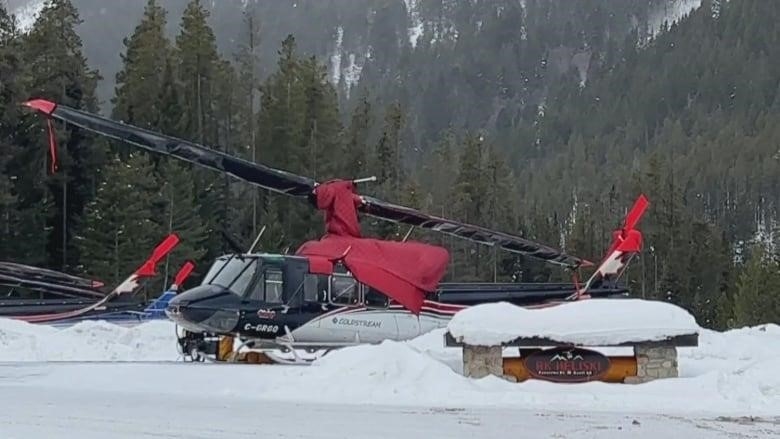
AvalancheCanada says it has no plans to regulate access to the backcountry
The deaths of three people in an avalanche in the Interior of British Columbia have shown how dangerous backcountry skiing can be. Weather forecasters have also warned that conditions this season are especially dangerous.
The RCMP said that the avalanche carried away the group of heli-skiers near the Panorama Mountain Resort, which is about 150 kilometers southwest of Banff, Alberta.
The police said that they knew where everyone in the group was. Four people were hurt, but they are expected to get better.
The slide went down in an area that wasn’t part of the Panorama resort. The group was on a tour with RK Heliski, a local business that has been around for decades.
The group that sets the rules for heli-skiing says the industry has a “robust regulatory environment.” However, Avalanche Canada says it has no plans to regulate backcountry access because education and training are the keys to safely enjoying the outdoors.
Backcountry not being close
When asked if the backcountry should be closed for safety reasons, B.C.’s Minister of Emergency Management and Climate Readiness, Bowinn Ma, said that the province is in touch with Avalanche Canada and is “ready to act as advised.”
She points out that the agency uses a five-point danger scale to measure the risk in the backcountry. Ma says that the government currently calls the risk in the province “considerable” and has raised the warning level to “high” in some areas.
Zoe Ryan, an avalanche forecaster for Avalanche Canada, says that its job is to give people the information and training they need to stay safe from avalanches.
Ryan said, “We don’t plan to and won’t ever put rules on access to the backcountry.”
She says that people who like to be outside can use the backcountry safely if they have the right knowledge and training.
“Sometimes we’ll tell people to stay away from avalanche terrain, but we’ll never tell them to stay out of the backcountry.”
‘Challenging year’ for secto
The president of RK Heliski, Tom Brinkerhoff, told the media on Thursday that it was the “saddest day ever.” He said that the guests and guides who ski with them every season are like family.
“It’s hard to put into words how sad we are and how sad our guests, their families, and everyone on our staff are,” said Brinkerhoff.
Watch as the CEO of the company that makes Heli-skis talks about the deaths caused by an avalanche:
The deaths on Wednesday come after two brothers from Pennsylvania died in January while on a guided heli-skiing tour near Revelstoke, B.C., about 200 kilometers northeast of Kelowna. They were caught in a slide.
HeliCat Canada, a trade group for helicopter and snowcat ski operations, says that about 44,000 heli-skiers hit the remote mountain slopes of British Columbia every year. Between mid-December and the end of April, about 3,000 people work during the season.
Small groups of skiers can heli-ski by taking a helicopter to the top of a mountain, where their ski run begins. They can also take a snowcat, which is a big vehicle with caterpillar tracks that can move on snow and can carry up to 12 people.
A three-run day package starts at about $1,000 per person, but a more luxurious private package can cost up to $14,000.
HeliCat Canada said on its Facebook page that it has been a “challenging year for our industry.”
It says that the industry has a “sophisticated and robust regulatory environment” with four organizations that work together but are still separate. Their goal is to make sure that the industry “self-manages, like many other industries do, to the highest possible standards.”
Watch: As forecasters predict a bad avalanche season in B.C., experts offer safety training.
HeliCat Canada says it sets operating standards for the sector and is in charge of inspection audits and an accreditation process. Every five years, the operators are checked out.
HeliCat Canada says that guides can get training and certification from the Association of Canadian Mountain Guides and the Canadian Ski Guide Association. The Canadian Avalanche Association (CAA), which offers training and certification, also has guides as members. The CAA works with Avalanche Canada to use data to make backcountry warnings for the public.
The organization knows that there is still a risk.
“Like many outdoor activities, it’s impossible to get rid of all the risks, but our industry does its best to reduce them with world-class knowledge and experience so that guests can enjoy the beauty and unique experience of helicopter and snowcat skiing,” it said.
Ryan says that the number of people using the backcountry has grown “exponentially” over the past 10 years, but that the number of people killed by avalanches has gone down. She thinks that this is because people are learning more about avalanches and getting better training.
